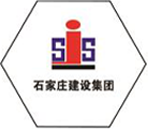
Nov . 09, 2024 03:34
Back to list
Understanding the Importance and Functionality of Safety Relief Valves in Industrial Applications
Understanding Safety Relief Valves Essential Components for Pressure Management
In various industrial applications, managing pressure is crucial to ensure operational efficiency and safety. One of the critical components designed for this purpose is the safety relief valve. This device plays a vital role in preventing equipment failure and safeguarding personnel by controlling the pressure within systems that handle gases and liquids.
What is a Safety Relief Valve?
A safety relief valve is a type of valve that automatically releases excess pressure from a system. When the pressure within a vessel or piping system exceeds a predetermined threshold, the valve opens to allow fluid to escape, thereby preventing potential catastrophic failures such as explosions or structural damage. These valves are essential in industries like oil and gas, chemical manufacturing, and power generation, where high-pressure systems are common.
How Does It Work?
The operation of a safety relief valve is straightforward. It is typically set to open at a specific pressure, referred to as the set pressure. When the internal pressure of a system rises above this set point, the valve's spring mechanism compresses, lifting the valve disc and allowing fluid to discharge. This continues until the pressure drops back to a safe level, at which point the valve closes, sealing the system once again.
Safety relief valves can be classified into two main types spring-loaded and pilot-operated. Spring-loaded valves utilize a spring mechanism to control the opening and closing, while pilot-operated valves rely on a secondary pressure signal to control the operation of the larger valve, making them suitable for higher pressures and capacities.
Importance of Safety Relief Valves
safety relief valve

The importance of safety relief valves cannot be overstated. Their primary function is to protect equipment and personnel from the dangers associated with overpressure situations. Without these valves, pressure vessels and piping systems could experience dramatic failures, leading to hazardous scenarios such as explosions, fires, or the release of toxic substances into the environment.
Moreover, safety relief valves contribute to regulatory compliance. Many industries are governed by strict safety standards that mandate the use of properly functioning pressure relief devices. Regular inspection, testing, and maintenance of these valves are essential to ensure they operate correctly when needed.
Installation and Maintenance
Proper installation and maintenance of safety relief valves are critical to their effectiveness. It's essential to consult with professionals who can assess the specific needs of a system and select the appropriate type and size of valve. Incorrectly sized or installed valves can lead to insufficient protection or premature opening, both of which can compromise safety.
Routine maintenance is equally important. Over time, mechanical components can wear out or become corroded, affecting their performance. Regular testing, cleaning, and recalibration ensure that the valves will function correctly during an overpressure event.
Conclusion
In conclusion, safety relief valves are indispensable components in the realm of pressure management. They play a crucial role in ensuring safety within high-pressure systems across various industries. By understanding their function, importance, and maintenance requirements, organizations can better prepare to handle potential risks, ultimately creating a safer working environment for everyone involved. Investing in quality safety relief valves and adhering to maintenance protocols is not just best practice—it is a fundamental aspect of operational safety.
Latest news
-
Safety Valve Spring-Loaded Design Overpressure ProtectionNewsJul.25,2025
-
Precision Voltage Regulator AC5 Accuracy Grade PerformanceNewsJul.25,2025
-
Natural Gas Pressure Regulating Skid Industrial Pipeline ApplicationsNewsJul.25,2025
-
Natural Gas Filter Stainless Steel Mesh Element DesignNewsJul.25,2025
-
Gas Pressure Regulator Valve Direct-Acting Spring-Loaded DesignNewsJul.25,2025
-
Decompression Equipment Multi-Stage Heat Exchange System DesignNewsJul.25,2025

